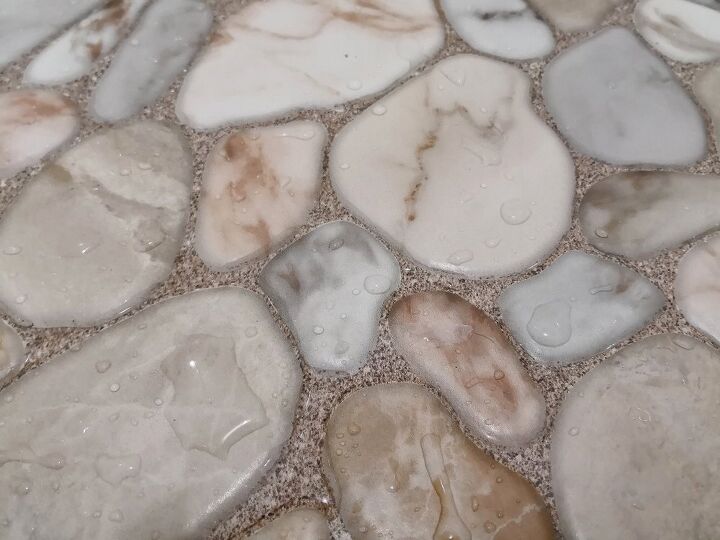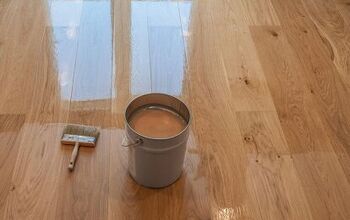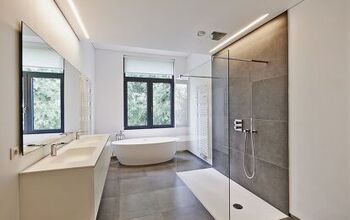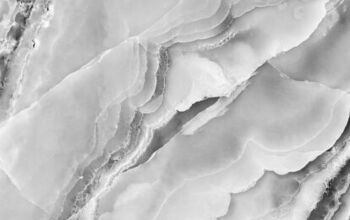What Are The Pros And Cons Of Pebble Shower Floors?

The shower is probably the number one place where we can relax and reset after a full day of obligations. Your shower should be luxurious and welcoming. If you’re looking to add an earthy aesthetic to your bathroom and shower scene, pebble shower floors will take you there.
Adding pebble flooring is a great and easy way to elevate your space without breaking the bank. Reminiscent of a babbling brook or a rushing river, pebble shower floors set your bathroom apart as a space in which to relax and rejuvenate.
Pebble showers floors give a spa-like aesthetic to your bathroom. Despite what many think, they are comfortable and slip-resistant in addition to their affordability.
However, because of their uneven surface, pebble shower floors retain water, causing mold and mildew growth. They are also high maintenance, requiring a lot of grout and consistent resealing. Without proper maintenance, pebble shower floors won’t last very long.
Do You Need to Hire Shower Installers?
Get free, zero-commitment quotes from pro contractors near you.

What Are The Pros of Pebble Shower Floors?
The visual appeal of multi-colored pebble flooring can’t be denied. It can be a great alternative for general tile when used as a shower floor.
Pebble flooring has many unlikely pros. Aside from its unique, natural appearance, pebble flooring is affordable, slip-resistant, comfortable, and durable.
Affordability
One of the great aspects of pebble flooring is its affordability. There are very few instances where cheap is a good thing. When it comes to home renovations, a cheap installation process is definitely a pro.
To keep down the cost of your pebble stone flooring, you can collect pebbles from beaches, rivers, and lakes. Not only will this lend a little sentimentality to your shower floors, but collected pebbles are free! Of course, you can always purchase pebbled tiles if you have neither the time nor inclination to collect your own pebbles.
Pebble tiles installation costs anywhere from $4 to $8 per square foot. Compare that to natural stone flooring which costs $5 to $10 dollars to install.
As far as the materials, pebble flooring prices vary depending on where you purchase them. Lowe’s sells pebble tiles ranging from $9 to $12 per sq ft. Compare this to Home Depot which sells pebble tiles ranging from $10 to $35 per sq ft.
With these wide price ranges, the potential for an expensive project is there. The final cost ultimately comes down to the size of your shower base and the price of the pebble tile. This can be done inexpensively.
Slip-Resistant
It might seem like a pebble shower floor is a slip and fall waiting to happen. Quite the opposite, actually! Pebble shower floors are slip-resistant. The uneven finish allows for better grip, which severely limits the risk of slipping and falling.
The grout and sealer between the stones will provide added texture, which will increase the traction under your feet. You definitely won’t have to purchase a shower mat when you decide to go for pebble shower floors!
Visually Stunning
There’s no denying the inherent beauty in a pebbled shower floor. Especially if you’ve opted for a collection of pebbles or pebble tiles that use different colored stones. With its sleek, modern, and decidedly rustic feel, your bathroom will look and feel luxurious.
Pebble tiles come in a variety of shapes, colors, and sizes, enabling them to go with just about any aesthetic. You can mix and match as you please to go with the rest of your bathroom or home decor.
The way in which you install the pebble floor makes it customizable. You can create different patterns or spacing for a unique-looking bathroom floor.
Comfortable
Standing on a floor of pebbles might sound like torture. But a key factor in a pebble floor is to use pebbles, not stones. Pebbles differ from stone in that they are rounded from constant contact with running water. The common misconception that pebbles are sharp is the main reason why people question the comfort of a pebble floor.
The roundness of pebbles actually make for a comfortable flooring surface. The more natural the pebble the more comfort it will give. The uneven surface and varying sizes of pebbles gives the shower floor great massaging properties. Imagine, every time you step into the shower, your get a mini foot massage. Who doesn’t want that?
Durable
Some pebbles are more durable than others, but think about how much it actually takes to break or chip a rock. Unless you’re planning on bringing something extremely heavy into the shower and dropping it, the pebble floor should stay in tact.
What Are The Cons Of Pebble Shower Floors?
As with any home renovation project, there are some downsides to pebble shower floors. They require a lot more maintenance than the average tile floor, which can drive up the overall cost. Pebble floors are difficult to install without profession help. Their layout also encourages mold and mildew growth.
Difficult DIY Installation
Using pebble tile flooring gives the most professional look. More often than not, pebble tiles are laid out in a mosaic pattern and attached to a flexible backing for ease of handling. However, this makes for an uneasy installation.
Pebble tiles are not an exact square, so lining them up is tricky and time-consuming. The installer has to remove pebbles and fit them by hand to line up the tiles properly. In addition, special tools are required to cut the pebbles in order to fit around the edges of the shower base.
If the pebble shower flooring isn’t installed perfectly, it has the potential to leak.
So Much Grout
On average, installing pebble tile flooring takes 2.5 times more grout than a similarly sized mosaic floor. Regular tiles and most mosaic tiles have a smooth surface once they’re installed. The gaps filled in by grout are all symmetrical, so you can roughly calculate how much grout is needed.
The sought-after unevenness of pebble flooring is a disadvantage when it comes to grout. Pebble floors require more grout to get an even coverage and fill in all the nooks and crannies. In addition, the grout is more exposed on pebble floors than with traditional tiles because of the different sizes and shapes of the pebbles.
Water Retention
Pebble flooring retains water in a way plain bathroom tiles do not. Because of the naturally uneven surface of pebble flooring, water sits between the pebbles, unable to make its way down the drain. Wherever water sits for an extended period of time, you have to worry about mold and mildew.
Many tile manufacturers will opt instead to slice pebbles in half. This creates a flatter, more even surface that allows water to drain. But the flat surface takes away from the natural aesthetic of pebble shower floors.
In order to avoid mold growth, it’s important to keep the pebble floor as dry as possible between uses. And this annoying task brings us to our next con.
Hard to Clean
Because of the exposed grout, cleaning pebble tile flooring is tricky. You can’t clean your pebble flooring the same way you’d clean a tiled shower floor. Harsh chemicals can damage your pebbles. Cleaning should only be done on dry floors.
Additionally, if you live in an area known for hard water, you will want to monitor your cleaning and maintenance routines in order to preserve the pristine look of your pebble flooring. Exposure to hard water can slowly chip away at your flooring, leaving you with exposed pebbles that will need to be replaced often.
High Maintenance
They may create a beautiful aesthetic, but it sure takes a lot to keep a pebble floor looking that way. Compared to tiles, you’re looking at replacing or repairing your pebble floor with some frequency.
Because of the intense amount of sealer and grout used on this type of flooring, you’re going to be repairing and replacing a lot over the long run. This might make the shower floor more expensive over time than you’d originally intended.
Typically, sealant lasts between 6 and 12 months. So, at the very least, you need to reseal your pebble flooring at least once a year. It’s also recommended that you seal before AND after you grout when first installing and with each time you regrout.
Pebble Shower Floor Mat
A possible solution to a completely pebbled shower floor is to get a pebble shower floor mat. Shower floor mats suction to the shower base, creating a non-slip surface. There are many beautiful examples that incorporate the pebble design without the grout and maintenance.
Pros and Cons Summed Up
Below is a chart summarizing the pros and cons of pebble shower flooring.
| Pros | Cons |
| Affordable material and installation | Difficult to install on your own which can lead to leaks |
| Slip-resistant surface | Needs more than 2x the amount of grout than regular tiles |
| Beautiful, natural aesthetic with a variety of design options | Water drainage problems that create mold |
| Uneven surface has massaging qualities | Difficult to clean |
| Durable | Require constant regrouting and resealing |
Do You Need to Hire Shower Installers?
Get free, zero-commitment quotes from pro contractors near you.

Our Verdict
As you can see, the number of pros and cons of a pebble shower floor are evenly split. It comes down to what you are willing to sacrifice for a pebble floor in your shower. Even though pebble shower floors are more high maintenance, the visual appeal is undeniable. Does a spa-like shower floor outweigh the idea of annually resealing it? Only you can decide.

Paige is an elementary school librarian with a passion for writing. Her hobbies include reading an exorbitant amount of fantasy, slowly teaching herself to draw, and home decor. While she isn't the most talented artist or interior designer, what she lacks in skill she more than makes up for in enthusiasm. When she's not curled up with a book, you can certainly find her curled over the keyboard.
More by Paige Hanawalt



























